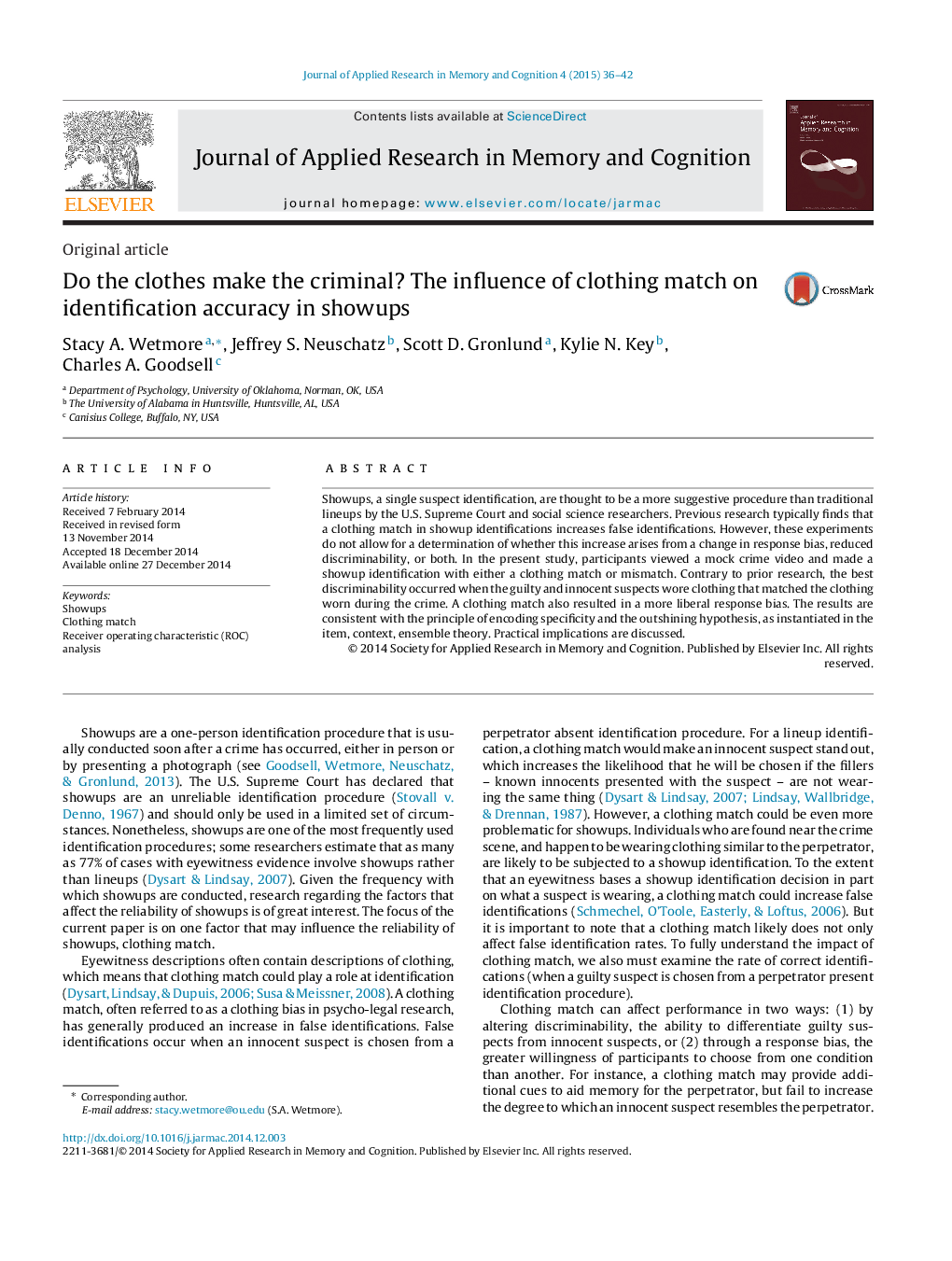| Article ID | Journal | Published Year | Pages | File Type |
|---|---|---|---|---|
| 881599 | Journal of Applied Research in Memory and Cognition | 2015 | 7 Pages |
•We examined discriminability differences from clothing match in showup identifications.•Receiver operating characteristic (ROC) and logistic regression analyses were conducted.•A match between the crime and identification resulted in superior discriminability and more liberal response bias.•The results are consistent with predictions made by the item, context, and ensemble (ICE) theory.
Showups, a single suspect identification, are thought to be a more suggestive procedure than traditional lineups by the U.S. Supreme Court and social science researchers. Previous research typically finds that a clothing match in showup identifications increases false identifications. However, these experiments do not allow for a determination of whether this increase arises from a change in response bias, reduced discriminability, or both. In the present study, participants viewed a mock crime video and made a showup identification with either a clothing match or mismatch. Contrary to prior research, the best discriminability occurred when the guilty and innocent suspects wore clothing that matched the clothing worn during the crime. A clothing match also resulted in a more liberal response bias. The results are consistent with the principle of encoding specificity and the outshining hypothesis, as instantiated in the item, context, ensemble theory. Practical implications are discussed.
